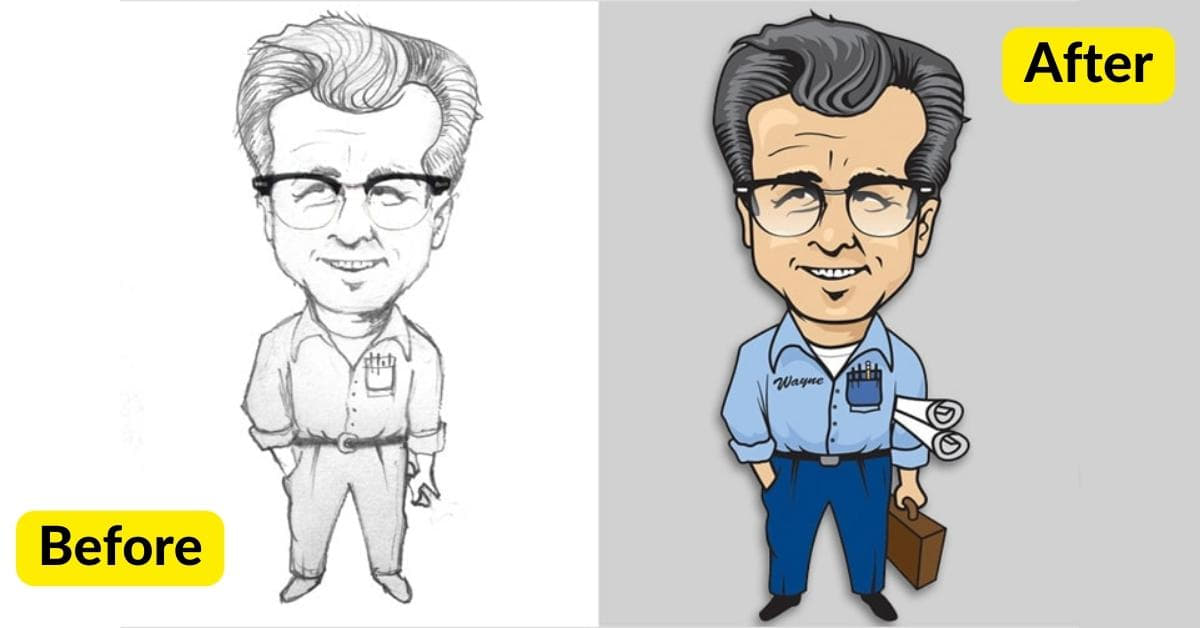In the ever-evolving world of digital art and design, vector art conversion has become an indispensable tool. Whether you’re a graphic designer, illustrator, or just someone looking to give their creations a professional touch, the ability to convert raster images into vector art is a skill that can make your work stand out. In this article, we will explore the intricacies of vector art conversion, its significance, and how to go about it. We’ll also address some frequently asked questions to provide you with a complete understanding of this creative process.
What is Vector Art Conversion?
Vector art conversion is the process of transforming raster or bitmap images into vector graphics. Raster images, such as JPEGs or PNGs, are composed of pixels and have a fixed resolution. Vector graphics, on the other hand, are composed of paths and shapes defined by mathematical equations, allowing them to be infinitely scalable without losing quality. This conversion process helps preserve the clarity and quality of the image, making it suitable for various applications, from logos and icons to large banners and billboards.
The Importance of Vector Art
Vector art offers several advantages, including:
- Scalability: Vector images can be resized without losing quality.
- Versatility: They can be used for a wide range of applications.
- Professionalism: Vector graphics often look cleaner and more polished.
- Editability: It’s easier to make changes and modifications to vector art during photo editing.
- Printing: Ideal for high-quality printing and large-format projects.
Tools for Vector Art Conversion
To perform vector art conversion, you can use software like Adobe Illustrator, CorelDRAW, or dedicated online tools like Vector Magic. These programs offer a range of features for precise tracing and conversion. Whether you’re a professional designer or a beginner, these tools can help you achieve your desired results.
Steps to Convert Raster Images into Vector Art
Here’s a step-by-step guide to convert raster images into vector art:
Step 1: Choose Your Image
Select the raster image you want to convert, ensuring it’s of the highest quality and resolution.
Step 2: Open Your Software
Launch your vector graphics software, like Adobe Illustrator.
Step 3: Import the Image
Import the raster image into the software.
Step 4: Tracing
Use the tracing tools to outline and define the shapes in the image.
Step 5: Refine and Edit
Adjust the paths, colors, and details to your liking.
Step 6: Save as Vector
Save the image in a vector format like SVG or AI.
Tips for a Successful Vector Conversion
- Start with high-quality source images for the best results.
- Use the appropriate software or tools for your skill level.
- Practice and experiment with different tracing settings.
- Pay attention to detail, as accuracy is crucial for quality.
- Keep backups of your original images for future edits.
FAQs
Can I convert any image into vector art?
Yes, you can convert most raster images into vector art. However, complex images with intricate details may require more effort and skill.
Do I need to be an expert to perform vector art conversion?
No, but practice and familiarity with vector software will help you achieve better results over time.
What file formats can vector art be saved in?
Common vector formats include SVG, AI, EPS, and PDF, which are compatible with various design software and printers.
Are there any free online tools for vector conversion?
Yes, there are some free online tools, but they may have limitations in terms of quality and options. Paid software often provides more advanced features.
What’s the difference between vector and raster images?
Raster images are made up of pixels and have a fixed resolution, while vector graphics are defined by mathematical equations and can be scaled infinitely without losing quality.
Conclusion
Vector art conversion is a valuable skill for artists and designers looking to enhance the quality, versatility, and professionalism of their creations. By understanding the process and using the right tools, you can unlock the full potential of your artwork. Start experimenting and practicing with vector art conversion, and you’ll soon see the difference it can make in your design projects.
This page was last edited on 22 February 2024, at 3:42 pm
